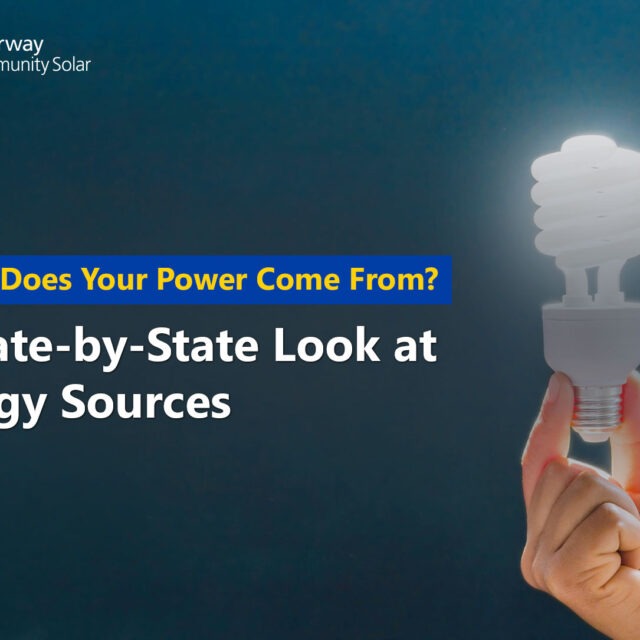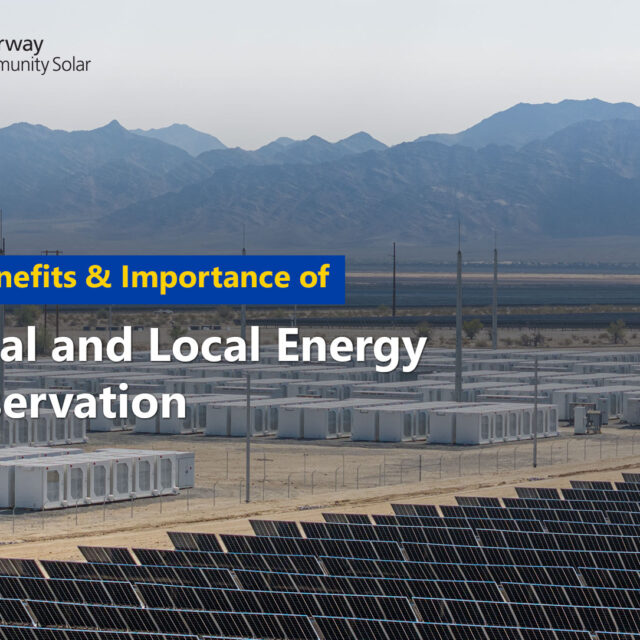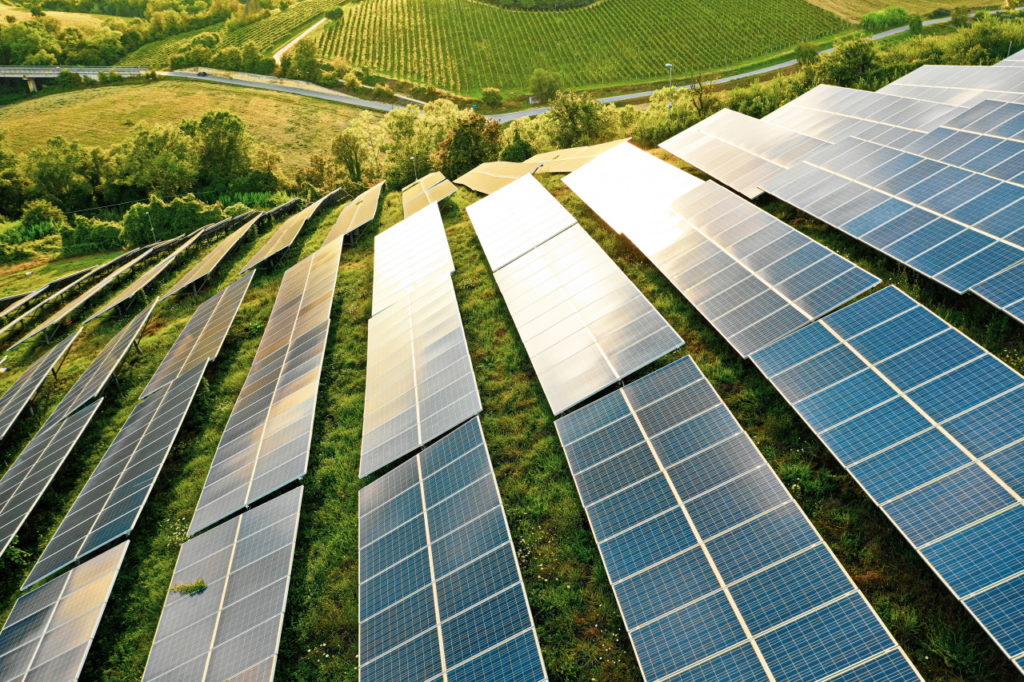
Parental Note: This experiment is geared towards ages 7 and up. The project may require support from an adult to gather materials and spray paint soda bottles.
Additional Notes: This experiment will take roughly four hours to complete.
Experiment Overview:
The sun not only provides us with light, but also gives out a lot of energy in the form of heat. The sun provides more energy in one hour than humankind uses over an entire year! It is also one of the most abundant sources of energy that we have. In fact, burning all the coal, oil, gas, and wood in the world would only be equal to a few days of energy produced by the sun.
There are two popular ways that solar energy can be harnessed. Active systems rely on devices that convert the sun’s energy into a more usable form, such as electricity. Passive systems are structures whose design, placement, or materials improve the use of heat or light directly from the sun. Passive systems rely only on natural elements and building materials to control the temperature inside of a home, and do not rely on the use of external devices. Passive systems replace the need for electricity altogether.
After sunset, have you ever felt the warmth from a big rock or a concrete bench that has been in the sun all day? The rock and the bench absorbed and stored the heat from the sun, and began to release it slowly once the sun went away. A passive energy system works in a similar way to control the temperature in a home. During the daytime, heat from sunlight that enters a building is absorbed by a thermal mass inside the structure. A thermal mass might be a big wall or section of the floor inside the home that is made of a construction material that can absorb large amounts of heat, such as concrete, brick, tile, or even water. As the sun sets and the air in the home begins to cool, the thermal mass slowly releases the heat it gathered all day to help maintain a comfortable air temperature inside the home through the night.
In this experiment, you will explore how people can control the temperature inside of a home by using different building materials, colors and proper placement to collect sunlight efficiently. You will create a passive energy system using soda bottles, balloons, and different colored paint.
To learn how the outcome of this experiment is implemented in homes to help conserve energy, you can read about Passive Solar Home Design here.
Answer the following questions before starting the activity:
- Do you think both balloons will blow up the same amount, or will one blow up more than the other? Why?
- Do you think there will be a difference in the amount of air in the balloons when you place them in the shade versus in the sunlight?
Experiment Materials:
- Two soda bottles (can be 1L or 2L, as long as they are both the same size)
- Black spray paint
- White spray paint
- Two balloons of equal size
Experiment Process:
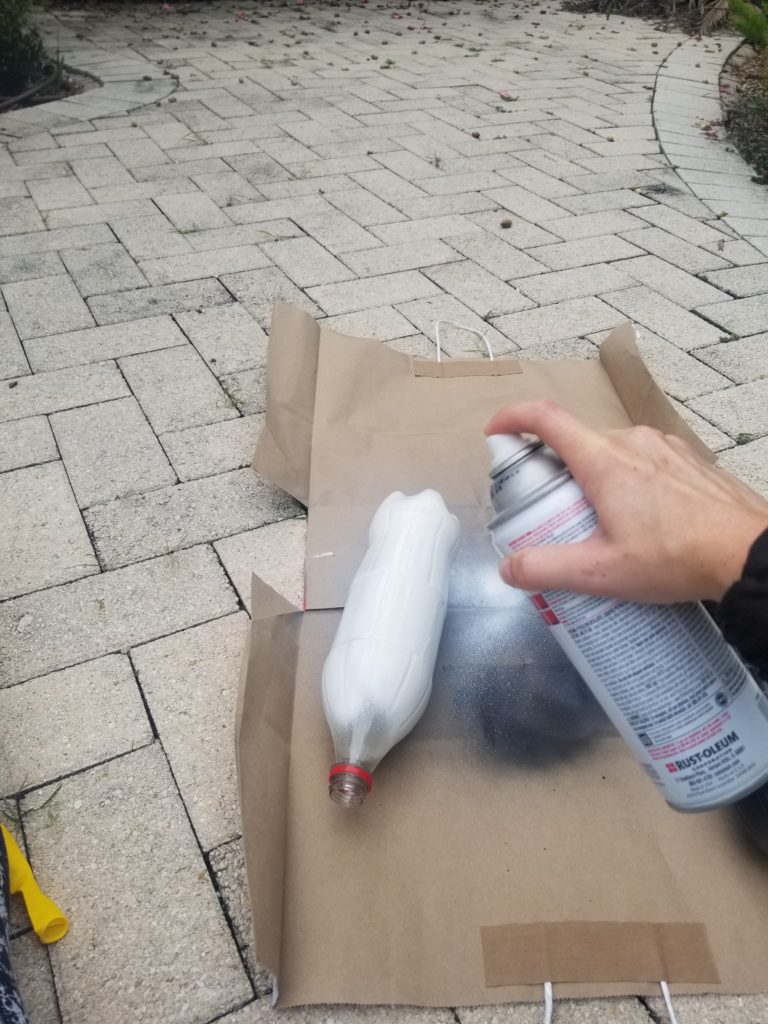
Step 1
With help from an adult, spray paint one bottle black, and the other bottle white. Leave a small section bare at the top of the bottle so that sunlight can pass through. Let paint dry for 30 minutes.
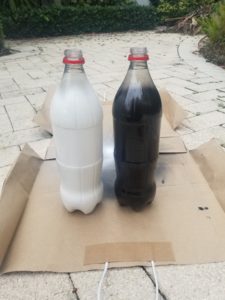
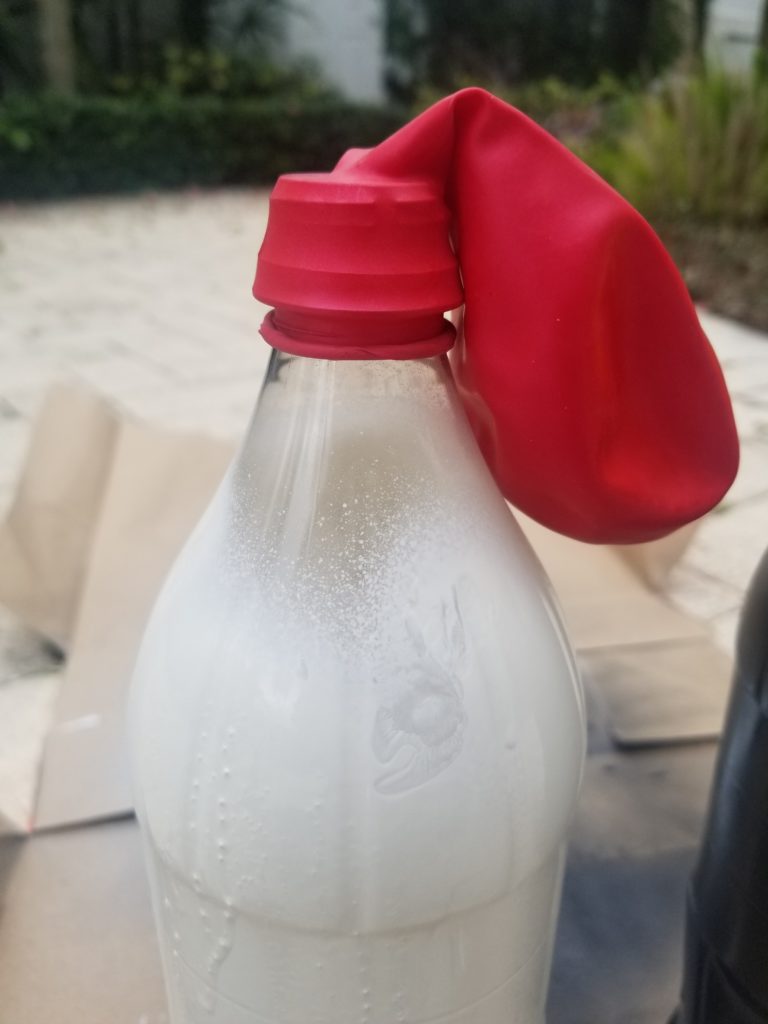
Step 2
Remove the cap from both soda bottles and stretch a balloon over the neck of each bottle. Make sure it is airtight and there are no holes in your balloon!
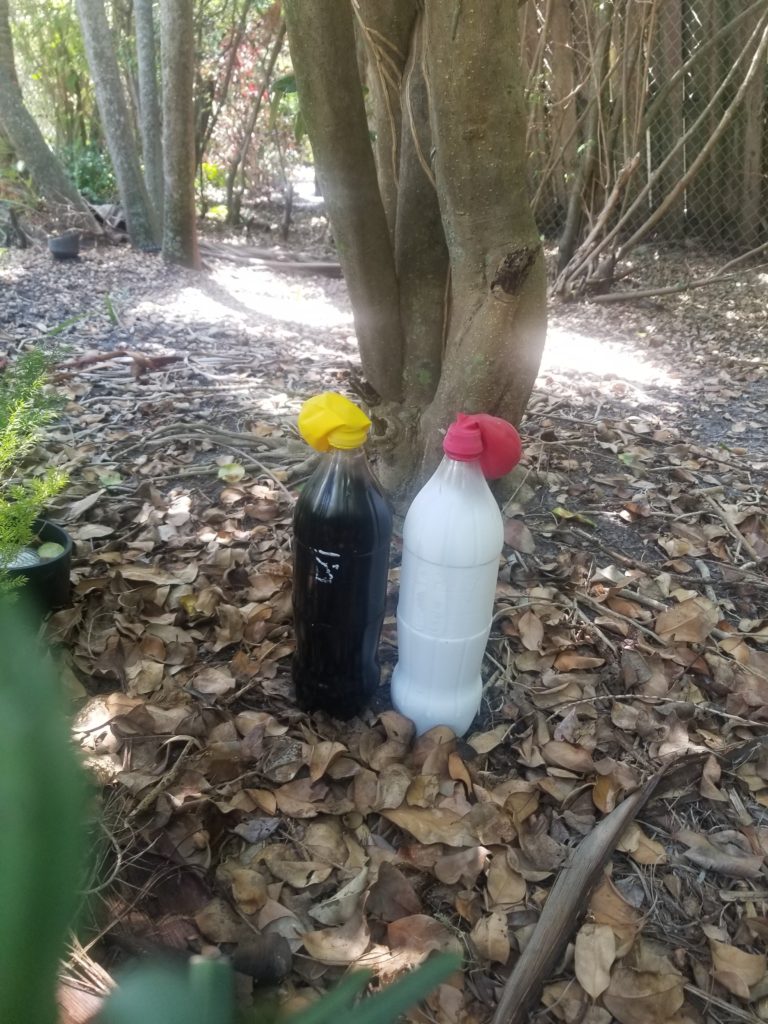
Step 3
Place the bottles in the shade and let them sit for one hour (make sure the wind doesn’t knock them down).
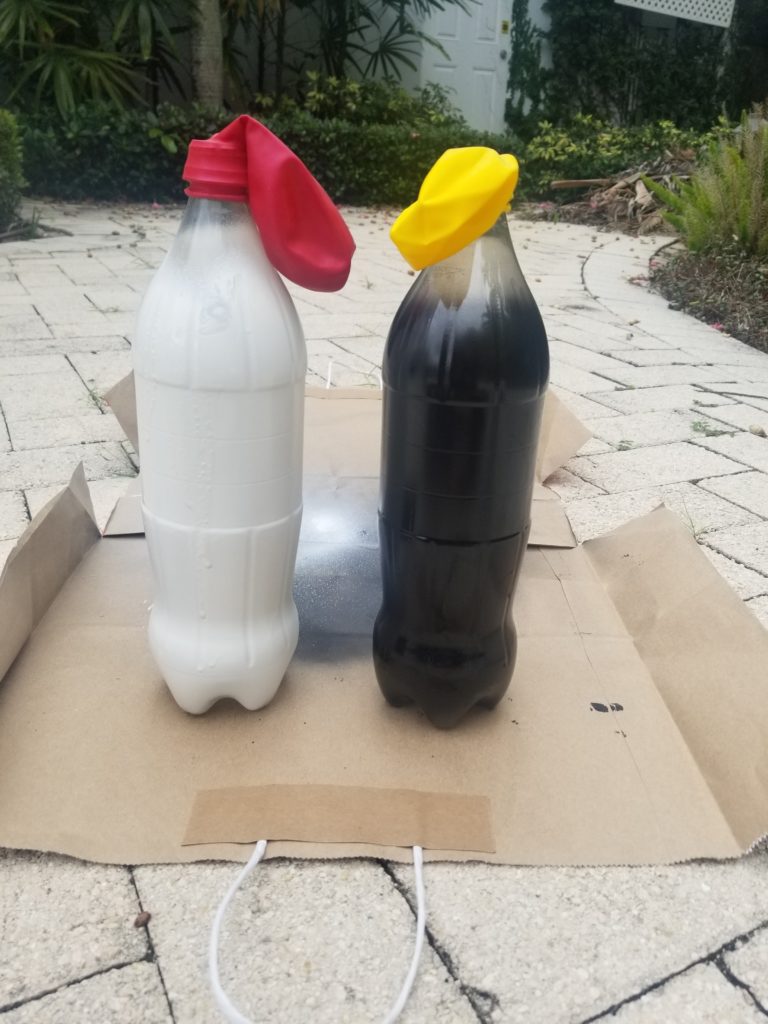
Step 4
After one hour, record your observations. Did any of the balloons fill with air? Does one balloon have more air than the other?
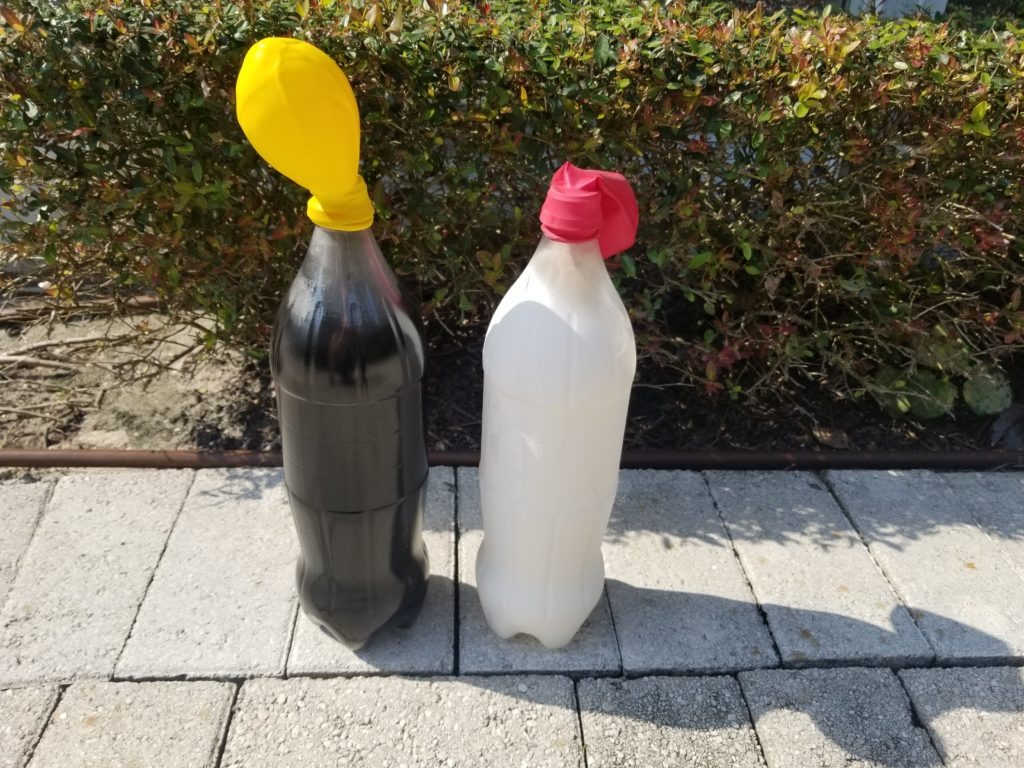
Step 5
Now place both bottles in direct sunlight and let them sit for one hour (make sure the wind doesn’t knock them down).
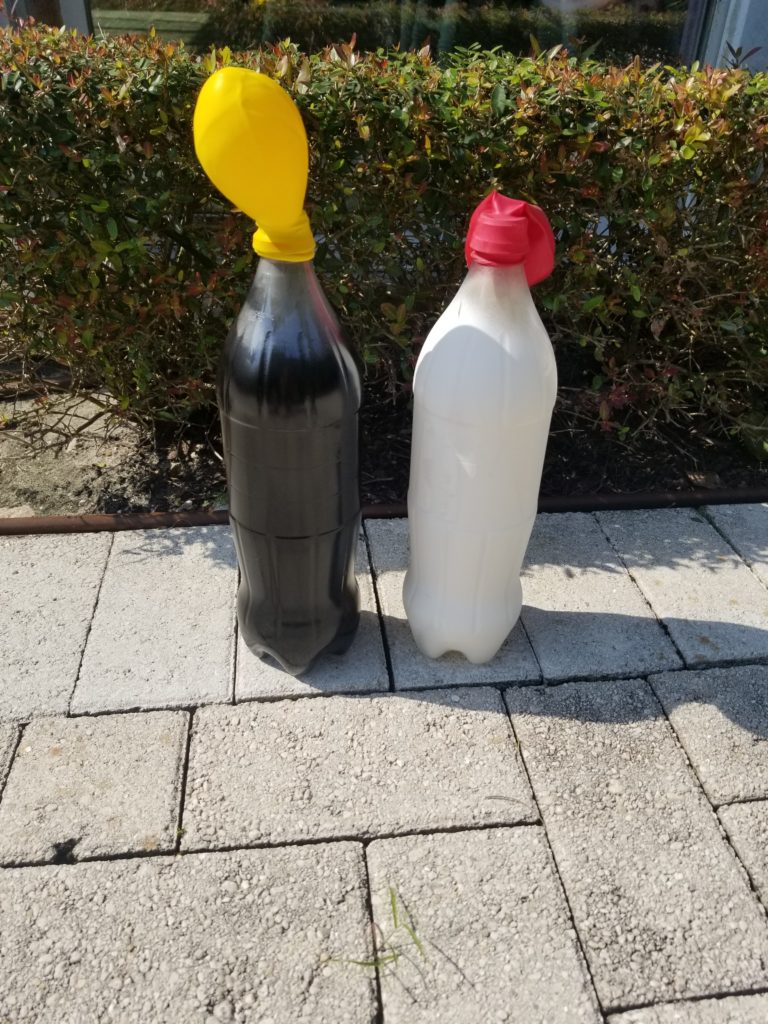
Step 6
After one hour, record your observations. Did any of the balloons fill with air? Does one balloon have more air than the other?
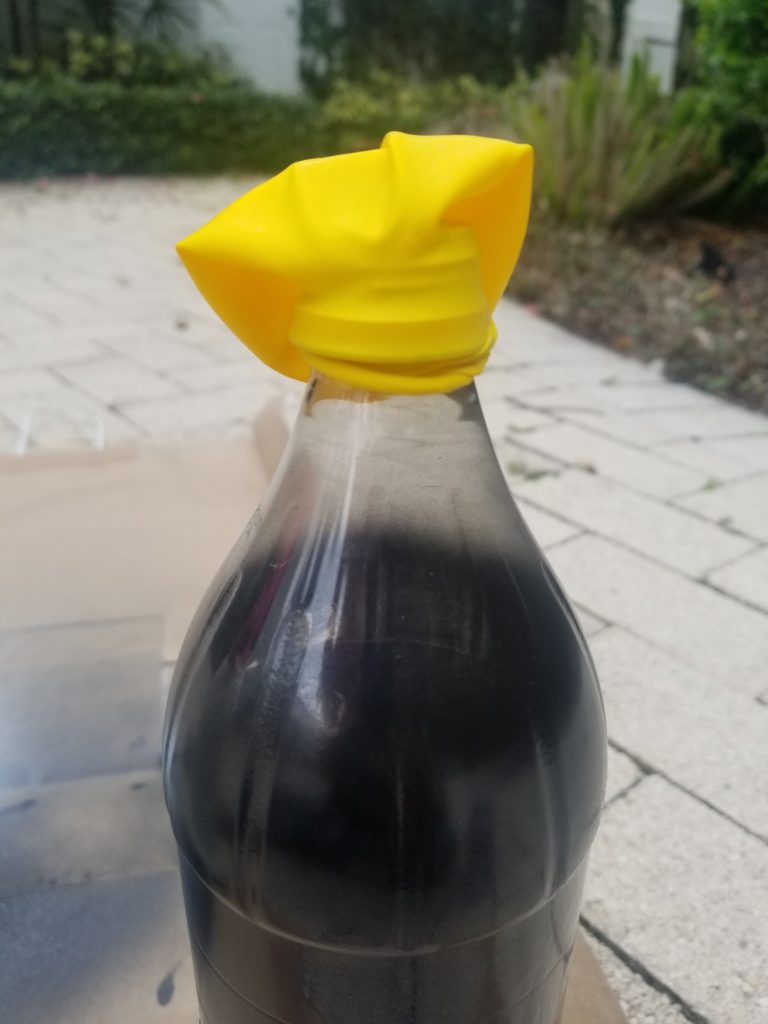
Step 7
After heating it up in the sun, now place your soda bottles back in shade and observe what happens to the air inside of the balloons after one hour.
Conclusions:
The soda bottles that you used were the same size, and therefore had the same amount of air inside of them. When you first placed both bottles in the shade, you may not have observed either of the balloons filling with air, because not a lot of energy (heat) was being transferred from the sun. When you placed the bottles in direct sunlight, you may have noticed that some of the air in the black soda bottle moved up and filled the balloon, but this did not happen with the white soda bottle. This is because dark-colored matter attracts and traps heat better than light-colored matter.
When matter is heated, it expands. When the soda bottle warmed up from the sun, the air molecules inside the bottle started to move faster and farther apart, causing the air to take up more space. Since warm air (in the bottle) is less dense than cold air (in the balloon), the air in the bottle started to rise up as it was heated and expanded inside of the balloon. The cool air that was inside of the balloon was displaced by the warm air and sank down into the bottle.
When you removed the black bottle from the sunlight and let it cool down in step 7, the balloon began to deflate and the air moved back into the bottle. This represents the thermal mass releasing heat back into the home at night to maintain a comfortable temperature throughout the evening. When the sun comes up the next day, this process will be repeated.
Extension:
Review Questions
- Which absorbs more heat, black or white surfaces?
- What happened to the air inside of the black bottle when you placed it in direct sunlight?
- What happened to the air inside of the balloon on the black bottle when you removed it from the sunlight?
- Could you use this method to control the temperature of a home?
- What other things could people accomplish by using special materials to collect the sun’s heat? (Hint: think about other things that we use heat for every day)
